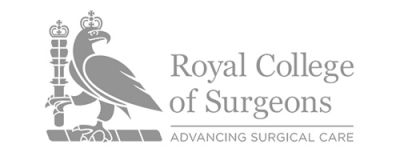AVASCULAR NECROSIS
Avascular Necrosis (AVN) is a condition where an area of bone dies. In the knee, the most common site is on the medial (inner) femoral condyle but AVN can occur anywhere in the knee.
SYMPTOMS
The predominant symptom of knee AVN is pain, which usually comes on spontaneously without any specific history of injury. Often the pain is worse at night and is felt on the inner (medial) aspect of the knee. Activity is restricted by pain and a limp is common.
CAUSES
The cause of AVN in the majority of cases is unknown but there are certain factors that can predispose to AVN:
- Alcohol abuse
- Steroid usage (usually high doses over a long period)
- Sickle cell disease (the commonest cause worldwide)
- Previous trauma
- Infection
- Caisson’s disease (occurs in divers)
- Miscellaneous – such as pregnancy and pancreatitis
When AVN occurs in the knee without any of the above, it is known as Spontaneous Osteonecrosis of the Knee (SONK). The vast majority of these patients are female and over the age of 60.
STAGES OF AVN
There are four progressive stages of AVN:
1. Bone death without structural change (weeks-months). X-ray shows no change; MRI best investigation
2. Repair and early structural failure. Bone appears more dense in affected area on X-ray but outline is normal
3. Bone segment begins to collapse and outline of bone becomes distorted
4. The knee becomes arthritic
X-rays in the early stages are usually normal: the best method of investigation at this time is an MRI scan. There are many cases where the diagnosis has been mistaken for a cartilage or meniscal injury and the patient has undergone arthroscopy; usually this makes symptoms worse.
With time, the area of dead bone may re-grow if it is small, but often the joint surface collapses as the underlying bone is relatively fragile. When this happens, arthritis usually follows fairly rapidly and is evident on routine X-rays.
TREATMENT OPTIONS
In the early stages (1 and 2), a period of protected weight-bearing using crutches may help by preventing bone collapse. In some cases, surgical drilling into the affected bone (‘decompression’) has been effective in preventing collapse of the bone and subsequent arthritis, but the disease has to be identified early for this to work. Most cases are diagnosed after this stage.
In the later stages (3 and 4), once arthritis has developed, the options are either to realign the knee (osteotomy) or to replace the damaged area using a knee replacement.
The results of osteotomy around the knee can be unpredictable but this is a reasonable option in younger patients. When the disease is confined to the medial (inner) side of the knee and arthritis is advanced, a unicompartmental knee replacement has been shown to give good results. For widespread disease, or if there is arthritis in other places within the knee, a total knee replacement (TKR) may be indicated.
The results of these operations are similar to the results when used in primary osteoarthritis.
Discussion with James is important to answer any questions that you may have. For information about any additional conditions not featured within the site, please contact us for more information.









